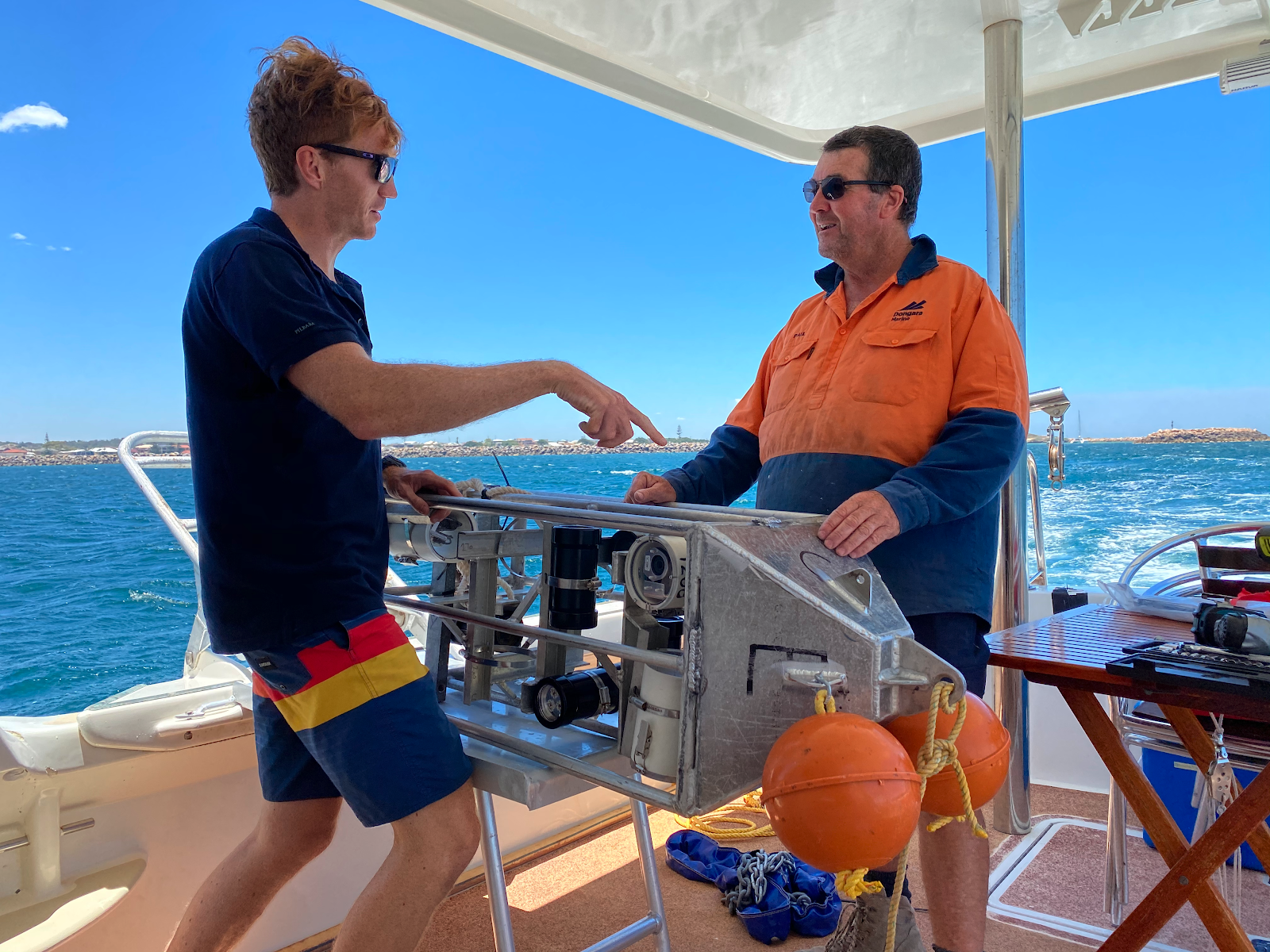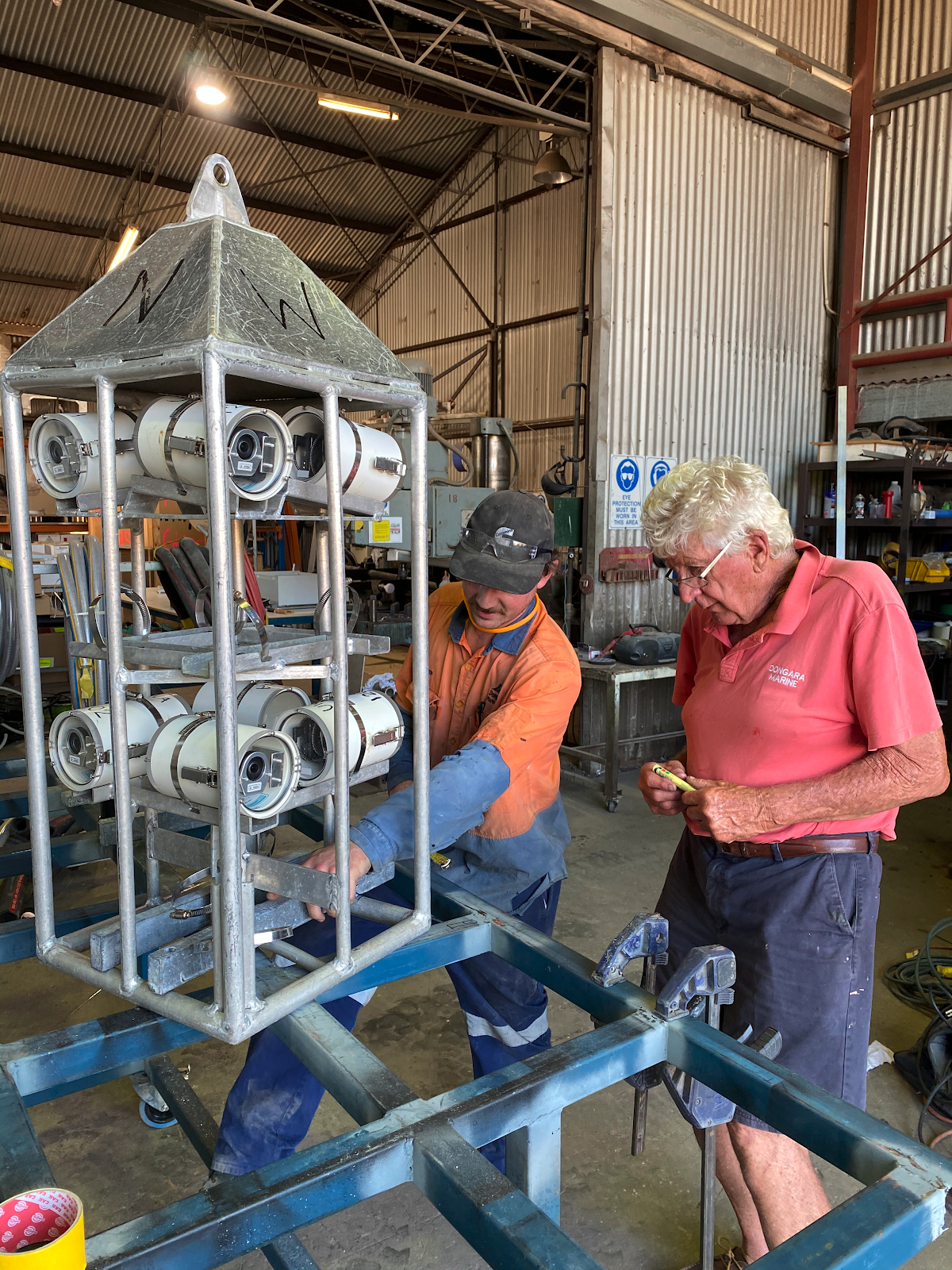Research into how changing seagrass habitats affect the survival of the Western Rock Lobster (Panulirus cygnus) during its early juvenile life-cycle stage adds to ongoing efforts to protect this high-value fishery.
New insights into the behaviour of early juvenile Western Rock Lobster and their preference for seagrass habitats are expected to significantly improve the capacity of fisheries managers to plan years ahead for any population impacts.

Western Australia’s West Coast Rock Lobster Managed Fishery (WCRLMF) is already a globally recognised model for sustainability. For decades, managers have used larval settlement monitoring as a reliable indicator for planning future catch limits.
However, in recent years there has been an increasing disconnect between larval settlement and catch rates for adult rock lobsters. Threats to the early juvenile life stage of rock lobsters known as puerulus are thought to be key, particularly habitat changes and climate anomalies, such as the 2011 marine heat wave.
Tackling twin challenges
Studying puerulus is challenging. In this tiny juvenile stage, they are all but invisible once they settle into their habitats. Equally problematic is mapping habitat change.
Satellite data of marine habitats needs to be ground-truthed to calibrate and validate mapping models and compare them with historical imagery to measure change. Until now there hasn’t been a satisfactory way to do this.
However, a comprehensive FRDC-funded project (2019-099) led by marine ecologist Dr Tim Langlois at the University of Western Australia has successfully taken on these twin challenges.
The project’s aims were to investigate habitat factors influencing juvenile lobster growth and survival, and develop practical, accessible, ways to perform this habitat monitoring and ground-truth data from existing remote sensing platforms.
Tim says research has given fishery managers the ability to track habitat and climate anomalies at important sites in the Western Rock Lobster fishery since 1987 and correlate these changes with changes in population and catch rates.
Seagrass preferences
“Juveniles in the wild are effectively invisible, so we built aquarium habitats that allowed the puerulus to grow on their settlement habitat and to be closely studied,” explains Tim.
“The aquaria experiments revealed that early juveniles have a very clear chemosensory preference for the dense seagrass habitats, particularly the wireweed species in the shallow water (less than 20 metres) along the coast between Mandurah south of Perth and Kalbarri to the north.
“This habitat is vulnerable to changes in water temperature, predation by herbivorous sea urchins and shifting sand that can smother the seabed vegetation.”
Tim says being able to monitor changes in vital seagrass habitats and the impact on puerulus, would give fishery managers two to three years advanced warning of consequences for the adult population and the implications for rock lobster catch rates.
Monitoring seagrass habitats
To monitor seagrass habitats and also ground-truth satellite data, the project team worked with Dongara boat builder and former lobster fisher John Fitzhardinge, to develop the Benthic Observation Survey System (BOSS).
This underwater camera array mounts two racks of stereo cameras to produce the 3D images needed to measure seagrass density. The four-camera racks have a combined field of view of 270 degrees and can cover up to about 100 square metres.

The system has also been designed for fast use. It can be deployed over the side of a commercial boat, left on the seabed just long enough for disturbed silt to settle, take photos and be retrieved all in about five minutes.
Tim says BOSS provides researchers and fishery managers with an improved means to monitor habitats, helping them to better understand potential drivers and interactions of larval settlement and puerulus survival.
The impact of climate anomalies, and potentially long-term climate change, is well illustrated by studies indicating declines in seagrass and kelp habitats along the Western Australian coastline.
“This project has provided extra capability to monitor coastal habitat, two to three years ahead of the potential impact of habitat change on the fishery and therefore improve the industry’s ability to set sustainable catches.”
FRDC Research Portfolio Manager Adrianne Laird says that by modelling and tracking changes in benthic habitats over time, this research provides insights into how ocean climate and recruitment habitats, such as seagrasses, influence the Western Rock Lobster population.
“This understanding is essential for improving the management of the fishery and ensuring its long-term future,” says Adrianne.
Related FRDC project
2019-099: Climate driven shifts in benthic habitat composition as a potential demographic bottleneck for Western Rocklobster: understanding the role of recruitment habitats to better predict the under-size lobster population for fishery sustainability





